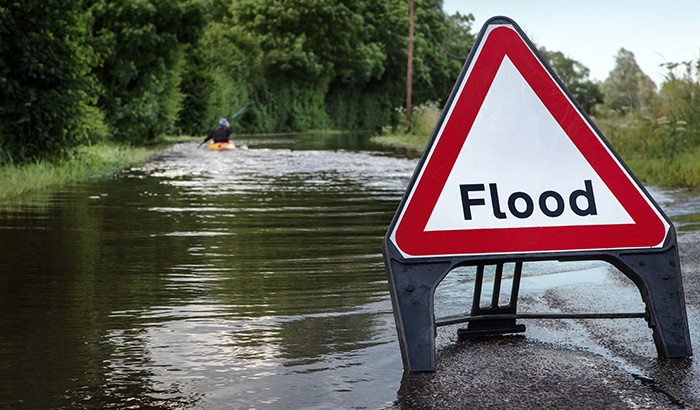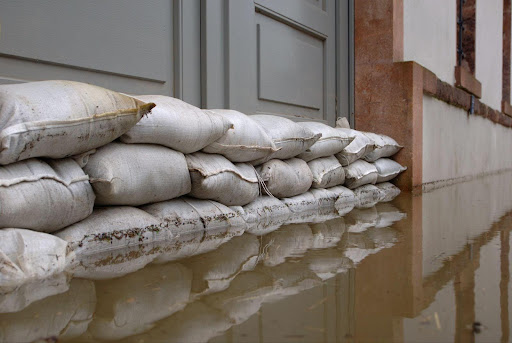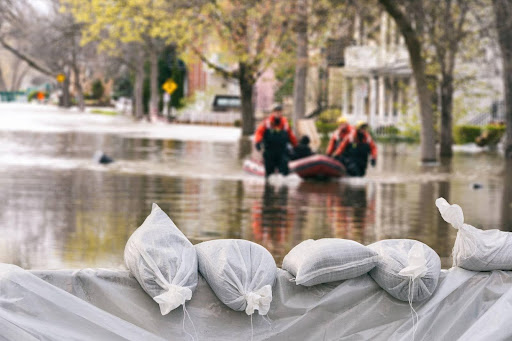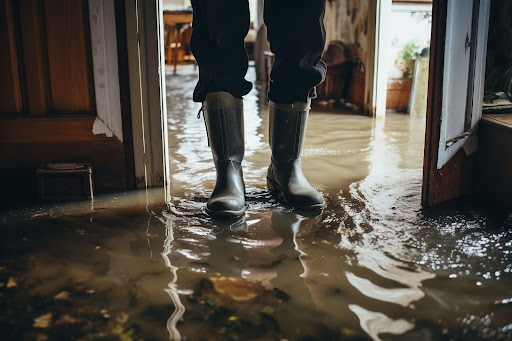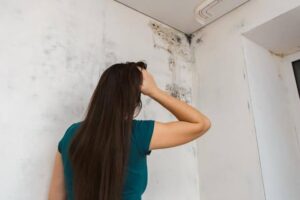A flood is a devastating natural disaster that can disrupt your life and damage your property. Being prepared for such an event is crucial to minimize risks and ensure the safety of yourself and your loved ones.
In this comprehensive guide, we’ll walk you through the key phases of flood preparedness for before, during, and after a flood. By understanding and taking proactive measures in each of these phases, you can significantly reduce the impact of a flood on your life and property.
Before the flood
A flood can be a sudden and unexpected event. Preparing beforehand is essential to safeguard yourself and your home.
Here are some guidelines and recommendations you should consider before a flood:
Understanding flood risks
Identifying flood-prone areas
To begin, research whether your area is prone to flooding. You can usually find flood zone maps and informative resources provided by local government agencies. Understanding the flood risk specific to your location empowers you to make informed decisions and take proactive measures to protect yourself and your property.

Researching historical flood data
By examining historical records and data related to past floods in your area, you gain valuable insights into the severity and frequency of such events. Armed with this knowledge, you can tailor your flood preparedness plans to the unique characteristics of your area, ensuring you are well-equipped to respond effectively to any future flooding.
Preparing an emergency kit
Essential supplies
Put together a well-rounded emergency kit to guarantee you’re fully prepared when a flood strikes. This kit should encompass essential supplies to ensure you and your family can sustain yourselves for at least three days.
Stock up on non-perishable food items like canned goods, granola bars, and dried fruits. Make sure you have enough to cater to your family’s dietary needs. Secure an ample supply of clean drinking water, with a recommended allocation of at least one gallon per person per day.
Remember to pack a first-aid kit, including bandages, antiseptic wipes, and any important prescription medications. You should also include reliable flashlights and spare batteries, a versatile multi-tool for various tasks, and any other personal items specific to your family’s needs, such as hygiene products or infant formula.
Important documents
Safeguard important documents like passports, birth certificates, insurance policies, and medical records. Consider storing digital copies in a secure cloud-based service for easy access during emergencies.
Developing a family emergency plan
When preparing for potential floods, it’s crucial to consider both evacuation routes and communication strategies. First and foremost, establish clear evacuation routes from your home, ensuring that every family member is familiar with them. Designate safe meeting points where you can all reunite in case you get separated during the evacuation.
In addition to physical safety measures, create effective communication strategies. Designate an out-of-town contact person who serves as a central point for all family members to check in with during and after the flood. Ask this contact to help coordinate information and inform everyone about each other’s safety.
Make sure that all family members have a way to charge their mobile devices, as these will be essential for staying connected during the event.
Home protection measures
Elevating utilities and valuable items
First and foremost, consider elevating electrical panels and HVAC (Heating, Ventilation, and Air Conditioning) systems to higher positions within your home.
Relocating these systems above potential flood levels can prevent water damage and electrical issues. You can elevate these items by placing them on specially designed platforms or stands that keep them well above anticipated water levels.
Because of their sentimental or financial value, you should prioritize the protection of valuable items, such as electronics, family heirlooms, and important documents. Store these items on higher shelves or in elevated storage containers.
Installing flood-resistant barriers
Flood-resistant barriers like sandbags or flood shields are designed for doors and windows and serve as a protective shield against encroaching waters.
Sandbags create a barrier that diverts water away from your property. When properly positioned, they act as a reliable buffer, helping to prevent flooding and reduce the risk of water entering your home. Similarly, flood shields designed for doors and windows provide a reinforced defense against rising waters.
Taking these precautions before a flood ensures that you and your family are well-equipped to face unexpected challenges. It also minimizes the potential damage to your property. Preparedness is your first and most important line of defense when it comes to floods and other disasters.
During the flood
When a flood is underway, your safety is paramount. Here’s what you need to do during a flood:
Prioritize safety
If you find yourself at home when flooding begins, quickly move to higher ground or a higher floor within your residence. Be cautious and avoid areas prone to swift water flow, such as ditches and storm drains. Resist the temptation to walk, swim, or drive through floodwaters, as they don’t always look as dangerous as they are.
If local authorities issue an evacuation order, adhere to it promptly. Evacuation orders are issued for your safety, so don’t hesitate to leave if instructed.
Stay informed
Stay updated by monitoring weather alerts and updates. Listen to NOAA Weather Radio, watch local news, or use weather alert apps to receive crucial information. Knowing what’s happening can help you make informed decisions during a flood.
Contact emergency services
If you’re in immediate danger or need assistance, call emergency services (e.g., 911) without delay. Keep your loved ones informed about your whereabouts and well-being. Regularly check in with family members or friends to reassure them of your safety.
Remember, during a flood, your main focus should be on staying safe and following the guidance of local authorities and emergency services.
After the flood
Once the floodwaters have receded, it’s time to take the necessary steps to recover safely and effectively.
Returning home safely
Before heading back home, ensure that local authorities have declared it safe. Exercise caution as you assess your property for damage. Look out for structural issues and fallen power lines, and be mindful of potentially contaminated water.
When entering your home, wear the appropriate personal protective equipment, such as gloves and boots.
During the initial assessment, take note of any damage, including structural issues and water damage. Document your findings thoroughly using photographs and detailed notes, as this documentation will prove invaluable when dealing with insurance claims.
Contacting your insurance provider
After a flood, promptly contact your insurance provider to initiate the claims process. They will require your policy details and documentation of the damage, so have that ready.
As you continue the recovery process, maintain detailed documentation of the damage and losses you’ve incurred. This encompasses both structural damage to your property and any loss or damage to personal belongings. Your thorough documentation plays a pivotal role in facilitating a successful insurance claim.
Cleanup and recovery
Following a flood, you should address mold prevention and remediation. Start by removing water-damaged items from your home. Clean and disinfect surfaces using appropriate solutions to prevent mold growth.
Adequate ventilation in the affected area aids the drying process. Consider using dehumidifiers to maintain the right humidity levels.
Depending on the extent of the damage, it may be necessary to enlist the help of professionals for structural repairs and restoration. Always prioritize the safety and habitability of your home before fully returning.
Future flood prevention and preparedness
After experiencing a flood, make any necessary adjustments to your emergency plan based on your experiences during the flood. Keep your emergency kit up-to-date with fresh supplies, and regularly check expiration dates to ensure its reliability in future emergencies.
Consider taking home improvement steps to mitigate future flood risks. Elevating your home, installing flood-resistant barriers, and reinforcing vulnerable areas are valuable measures to safeguard your property and loved ones from potential flooding.
Trust Total Flood & Fire Restoration
Total Flood & Fire Restoration is your reliable partner when dealing with the aftermath of a flood. With our years of experience and dedication to helping families recover from the devastating effects of floods, we are equipped to handle every aspect of flood recovery, from assessing the water damage to restoring your home and ensuring a safe environment for your family.
Don’t navigate the challenges of flood restoration alone. Call Total Flood & Fire Restoration at 385-483-2109. Your home and your family deserve nothing less.

